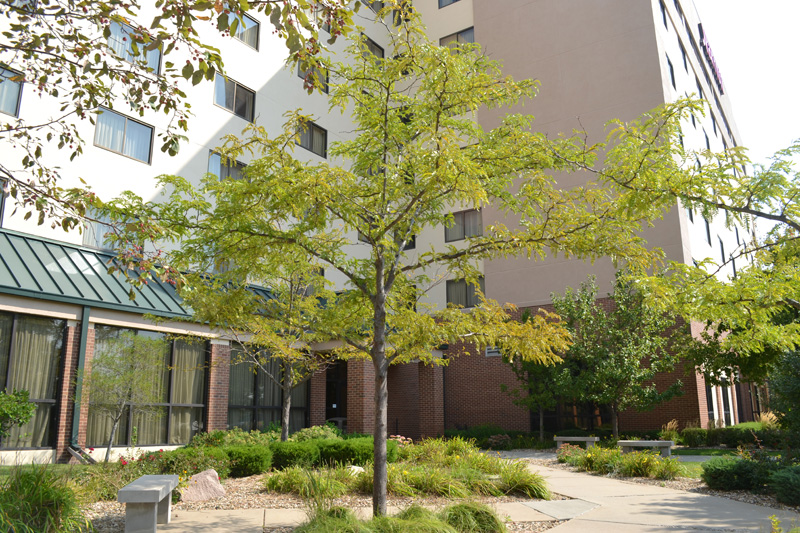Salt tolerant plants should be used in your landscape if your landscape beds are in the close proximity of a hard-surfaced area. Some plants are highly susceptible to salt damage and some plant are not. It is important to take a look at the proximity of your landscape bed in conjunction with areas that are treated with salt products so that you can install the most salt tolerant plants. Sodium chloride products are very harmful to some plant species. If these plants come in contact with salt products, they may be damaged or even die. Although some less salt resistant plants may be attractive, it is best to incorporate them into other areas in your landscape. Salt tolerant plants are the best fit in landscape beds with-in 20 feet of a hard-surfaced area. Some smaller salt particles may drift onto plants that are planted closer than 20 feet. The plant does not need to be directly in contact with the large pieces of salt to become damaged. Smaller particles may do as much damage or more as large particles.
Some salt tolerant plants.
Decedious trees-
- Apple Service Berry
- Shagbark Hickory
- Honey Locust
- Sycamore Maple
- English Oak
- White Oak
- Black Walnut
Shrubs-
- Service Berry
- Japanese Barberry
- Cotoneaster
- Forsythia
- Hydrangea
- Lilac (Miss Kim)
- Spirea (most variety)
If you use salt tolerant plants near hard surface areas, you will save yourself quite a bit of money replacing dead or damaged plant material. It is also important to keep in mind, where parking lot run off goes. If your parking lot runs off into an area of your property containing less tolerant species, you may also encounter problems. When salt is mixed with a liquid, it can easily be transferred to non target areas. This process is called run-off.
Keep in mind where you are installing plant material. Be aware of run-off potential. Install salt tolerant plant material and you should be fine. Save the less tolerant species to plant away from your high salt potential areas.
See our blog about salt damage.

